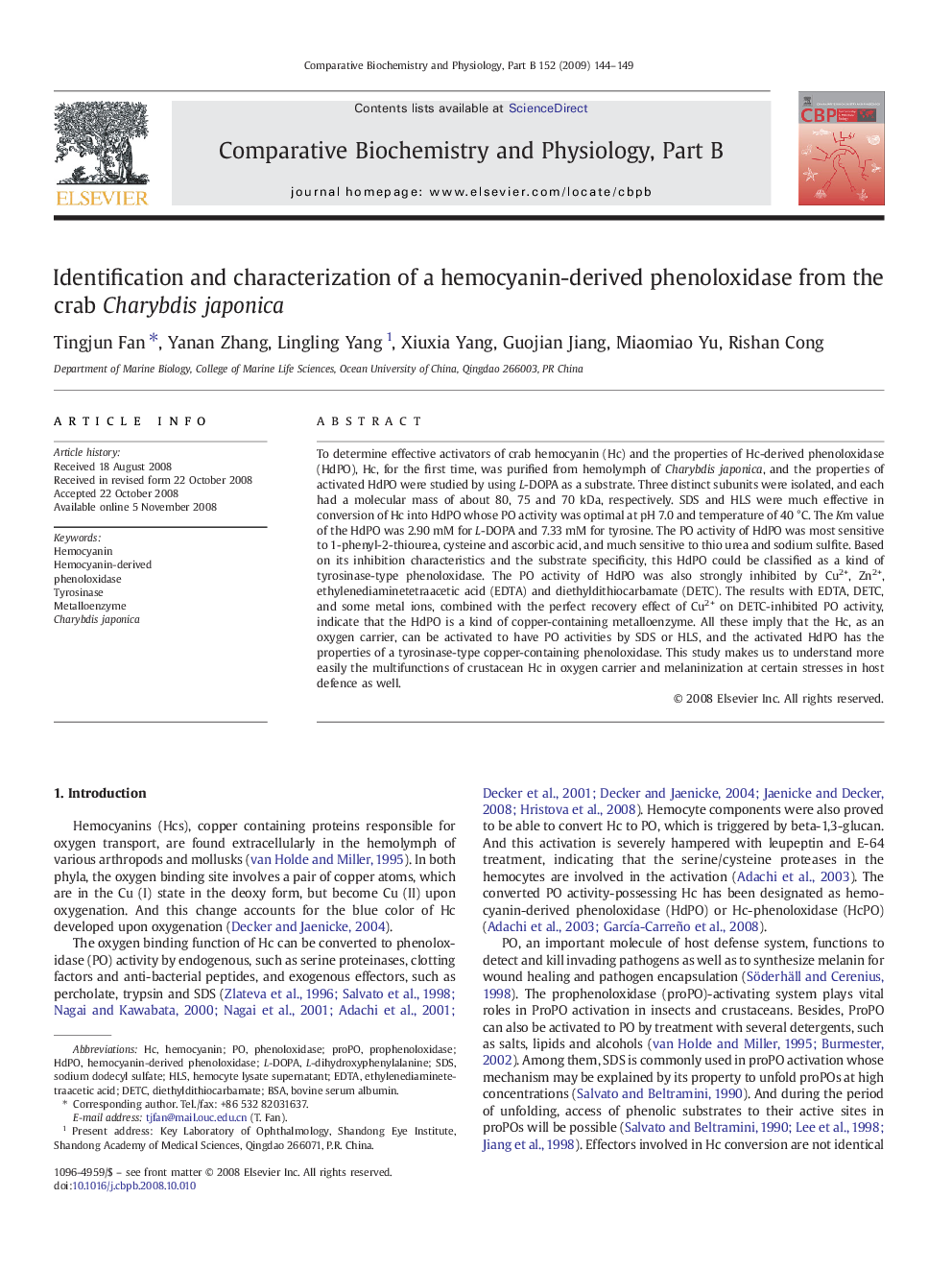| Article ID | Journal | Published Year | Pages | File Type |
|---|---|---|---|---|
| 1976140 | Comparative Biochemistry and Physiology Part B: Biochemistry and Molecular Biology | 2009 | 6 Pages |
To determine effective activators of crab hemocyanin (Hc) and the properties of Hc-derived phenoloxidase (HdPO), Hc, for the first time, was purified from hemolymph of Charybdis japonica, and the properties of activated HdPO were studied by using L-DOPA as a substrate. Three distinct subunits were isolated, and each had a molecular mass of about 80, 75 and 70 kDa, respectively. SDS and HLS were much effective in conversion of Hc into HdPO whose PO activity was optimal at pH 7.0 and temperature of 40 °C. The Km value of the HdPO was 2.90 mM for L-DOPA and 7.33 mM for tyrosine. The PO activity of HdPO was most sensitive to 1-phenyl-2-thiourea, cysteine and ascorbic acid, and much sensitive to thio urea and sodium sulfite. Based on its inhibition characteristics and the substrate specificity, this HdPO could be classified as a kind of tyrosinase-type phenoloxidase. The PO activity of HdPO was also strongly inhibited by Cu2+, Zn2+, ethylenediaminetetraacetic acid (EDTA) and diethyldithiocarbamate (DETC). The results with EDTA, DETC, and some metal ions, combined with the perfect recovery effect of Cu2+ on DETC-inhibited PO activity, indicate that the HdPO is a kind of copper-containing metalloenzyme. All these imply that the Hc, as an oxygen carrier, can be activated to have PO activities by SDS or HLS, and the activated HdPO has the properties of a tyrosinase-type copper-containing phenoloxidase. This study makes us to understand more easily the multifunctions of crustacean Hc in oxygen carrier and melaninization at certain stresses in host defence as well.
